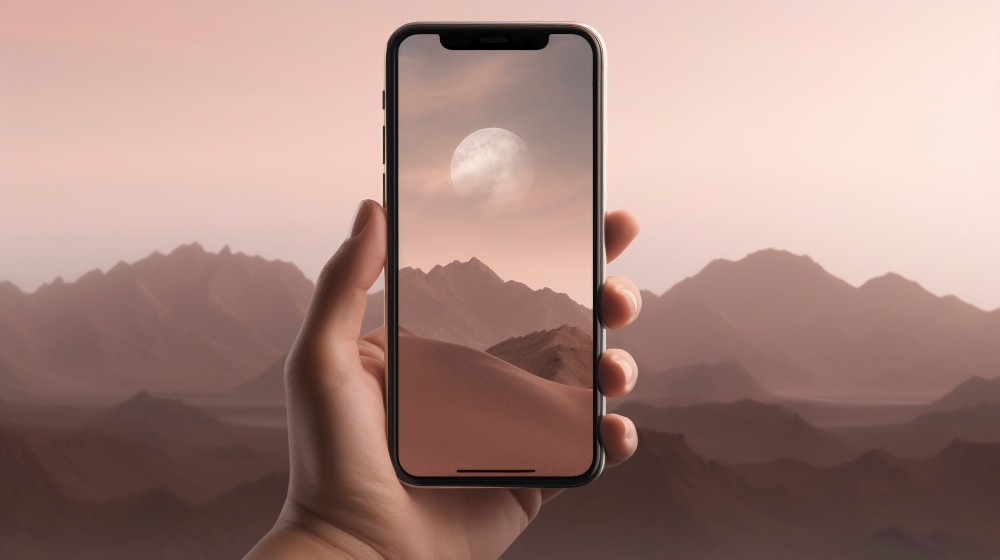Identifying opportunities for a premium smartphone brand among Apple/Samsung users
Consumer Behaviour
Study Summary
The research aimed to identify untapped market opportunities for the client by studying current users of Apple, Samsung, and other flagship brands. The objective was to understand the key factors driving brand choice, emotional connections, and why consumers either opted for or did not choose Apple/Samsung. The research further explored opportunities for the client to capture market share by meeting unmet consumer needs.
Research Objectives:
Understand Smartphone Preferences: Identify what features and qualities users value most in premium smartphones.
Assess Competitor Appeal: Examine how Apple and Samsung successfully attract customers and maintain brand loyalty.
Define Consumer Personas: Develop detailed profiles of premium smartphone users, including their behaviours, motivations, and decision-making processes.
Analyze Purchase Journey: Investigate the purchasing journey, including key influences like emotional drivers, digital ads, and recommendations.
Assess Satisfaction & Dissatisfaction: Measure consumer satisfaction with Apple, Samsung, and other flagship brands, identifying pain points that the client could address.
Explore Switching Factors: Understand why some consumers chose other flagship brands after considering Apple/Samsung and explore the triggers for this shift.
Methodology
A mixed-method approach combining quantitative and qualitative research was employed to capture comprehensive insights into consumer behaviour.
Phase 1: Quantitative Study (Online Surveys)
An online survey was conducted targeting current users of high-end smartphones, focusing on Apple, Samsung, the client’s brand, and other premium brands. Key areas addressed in the survey included:
Demographics: Information on age, income, and geographic location, as well as purchasing behavior (online vs. offline).
Drivers & Inhibitors: Key factors that influenced the decision to choose or reject certain brands, including functional and emotional drivers.
Satisfaction & Dissatisfaction: Evaluating the user experience with current smartphones, identifying satisfaction levels and areas for improvement.
Switching Factors: Exploring reasons for considering Apple or Samsung and why they ultimately switched to other brands, such as pricing or feature dissatisfaction.
The survey design minimized respondent fatigue, with a 15-minute limit and intuitive interfaces optimized for mobile, tablet, and desktop devices. The sample was carefully balanced to represent male and female consumers, aged 19-50, across metro cities in India.
Phase 2: Qualitative Study (In-depth Interviews)
The qualitative phase involved in-depth interviews (IDIs) with selected smartphone users, focusing on uncovering deeper insights into consumer motivations and behavior. Topics explored included:
Consumer Profiles & Aspirations: Understanding the role of smartphones in their lives and the lifestyle aspirations driving brand choice.
Satisfaction & Dissatisfaction: What works and what doesn’t with their current phones, focusing on key features like performance, camera quality, and durability.
Product Expectations: Identifying unmet needs and potential areas for the client to differentiate itself in the premium market.
The qualitative study targeted consumers from diverse cities across India, ensuring a broad representation of regional perspectives.
Sample Design
During the qualitative phase, two options were considered for the sample design:
Option 1: Online IDIs across Multiple Cities
Cities: Delhi NCR, Mumbai, Bangalore, and Kolkata
Sample Size: 10 respondents (3 Apple, 3 Samsung, 2 the client’s brand, 2 other flagship brands)
Method: Online through Teams/Zoom, providing a broader regional perspective.
Option 2: Offline IDIs in Bangalore Only
Sample Size: 10 respondents, all based in Bangalore.
Selected Approach
After careful consideration, Option 1 was chosen as the preferred approach. This option provided a more comprehensive view by including respondents from four major metro cities, offering a richer variety of perspectives compared to Option 2, which focused solely on Bangalore. Additionally, the online format allowed for greater flexibility and efficiency in data collection.
Challenges
Brand Loyalty: Apple and Samsung users exhibited strong brand loyalty, making it challenging to identify areas where the client could differentiate itself.
Geographic Diversity: Consumer behavior varied significantly between regions, requiring a methodology that accounted for both metro and non-metro dynamics.
Emotional Drivers: Understanding the complex emotional connections users had with their smartphones added a layer of complexity, particularly in terms of brand loyalty and perceived status.
Findings
Feature Preferences: Apple users prioritized design, brand status, and ecosystem integration, while Samsung users favored innovation in hardware (e.g., camera and display technology). Users who opted for other flagship brands valued the balance of performance and price.
Satisfaction Drivers: Apple users reported high satisfaction with ecosystem integration but expressed dissatisfaction with battery performance and the lack of customization options. Samsung users appreciated the technological innovation but found the user interface complex.
Switching Triggers: Consumers who switched from Apple or Samsung to other flagship brands cited price sensitivity, a desire for more innovative features, and dissatisfaction with certain high-cost brand elements (e.g., lack of customization).
Emotional Connections: Apple was strongly associated with social status and exclusivity, while Samsung users identified more with cutting-edge technology. The client’s brand was seen as the smart, value-driven alternative, appealing to those who prioritize performance without overpaying.
Business Implications/Outcomes
Positioning Strategy:
The client successfully positioned itself as a premium yet value-driven alternative to Apple and Samsung. By emphasizing strengths such as superior battery life, enhanced durability, and excellent performance while addressing unmet consumer needs, the client gained significant market share among price-sensitive premium buyers. This strategic positioning helped attract a loyal customer base that previously hesitated to invest in top-tier brands.Targeted Marketing Campaigns:
Through carefully executed influencer marketing and targeted advertising, the client effectively differentiated itself as the 'smart choice" for tech-savvy consumers. The campaigns resonated with younger audiences seeking premium features without the steep prices of Apple and Samsung devices. This strategy boosted brand visibility and engagement, leading to higher conversion rates among the desired demographic.Product Development:
The client can improve its competitive edge by addressing specific areas of dissatisfaction noted by Apple and Samsung users—battery performance, user interface customization, and durability. Product development should emphasize these features to better meet consumer expectations.Regional Insights:
With Option 1’s broader geographic reach, the findings provide the client with region-specific insights that can be leveraged to create customized marketing and product strategies for different cities. The company can create regionally tailored campaigns to cater to distinct consumer preferences across metro cities.Influencer & Social Media Strategy:
Given the strong influence of social media and key opinion leaders (KOLs), the client should continue investing in digital marketing strategies that utilize influencer partnerships and targeted ads to reach younger consumers. Emphasizing emotional drivers such as individuality, value, and performance could further strengthen brand positioning.
Conclusion
This market research study provided the client with valuable insights into the behaviours, motivations, and preferences of premium smartphone users, particularly those using Apple and Samsung devices. By strategically addressing the pain points uncovered in the study and leveraging key emotional and functional drivers, the client is well-positioned to capture a larger share of the premium smartphone market. With regionally tailored strategies, a focus on value-driven innovation, and targeted marketing efforts, the client can effectively challenge the dominance of Apple and Samsung in the high-end smartphone segment.
KEEP READING



